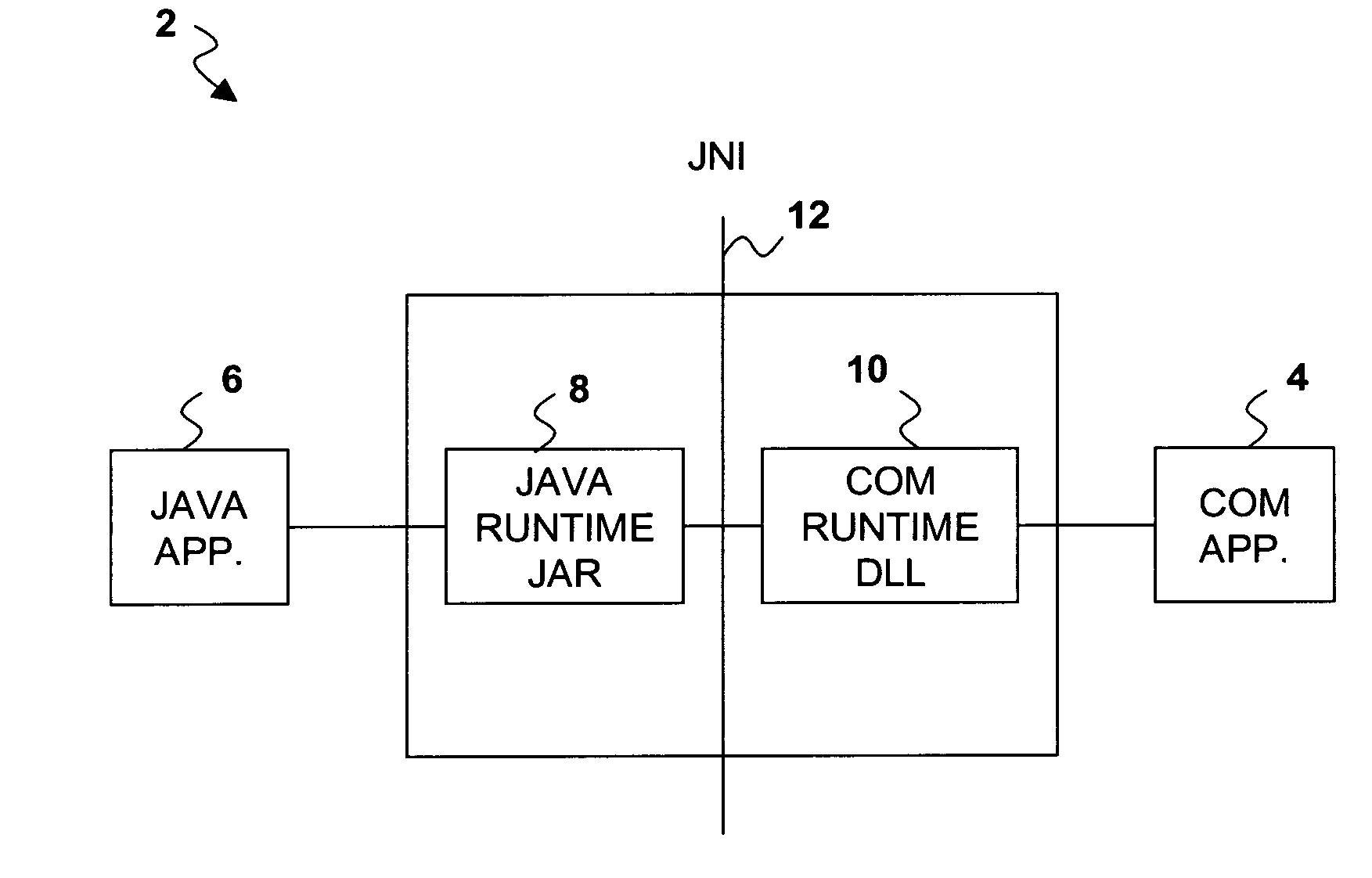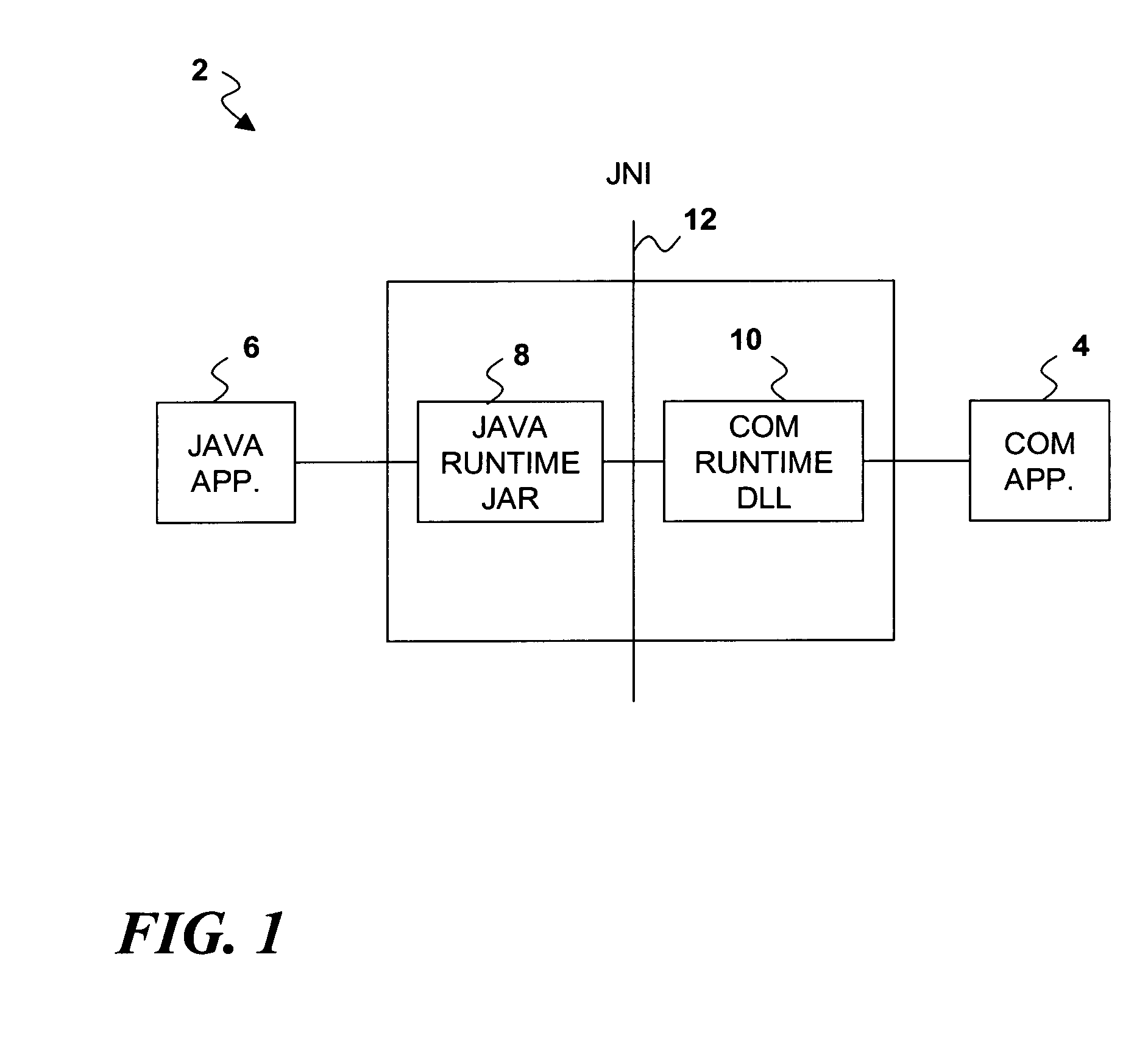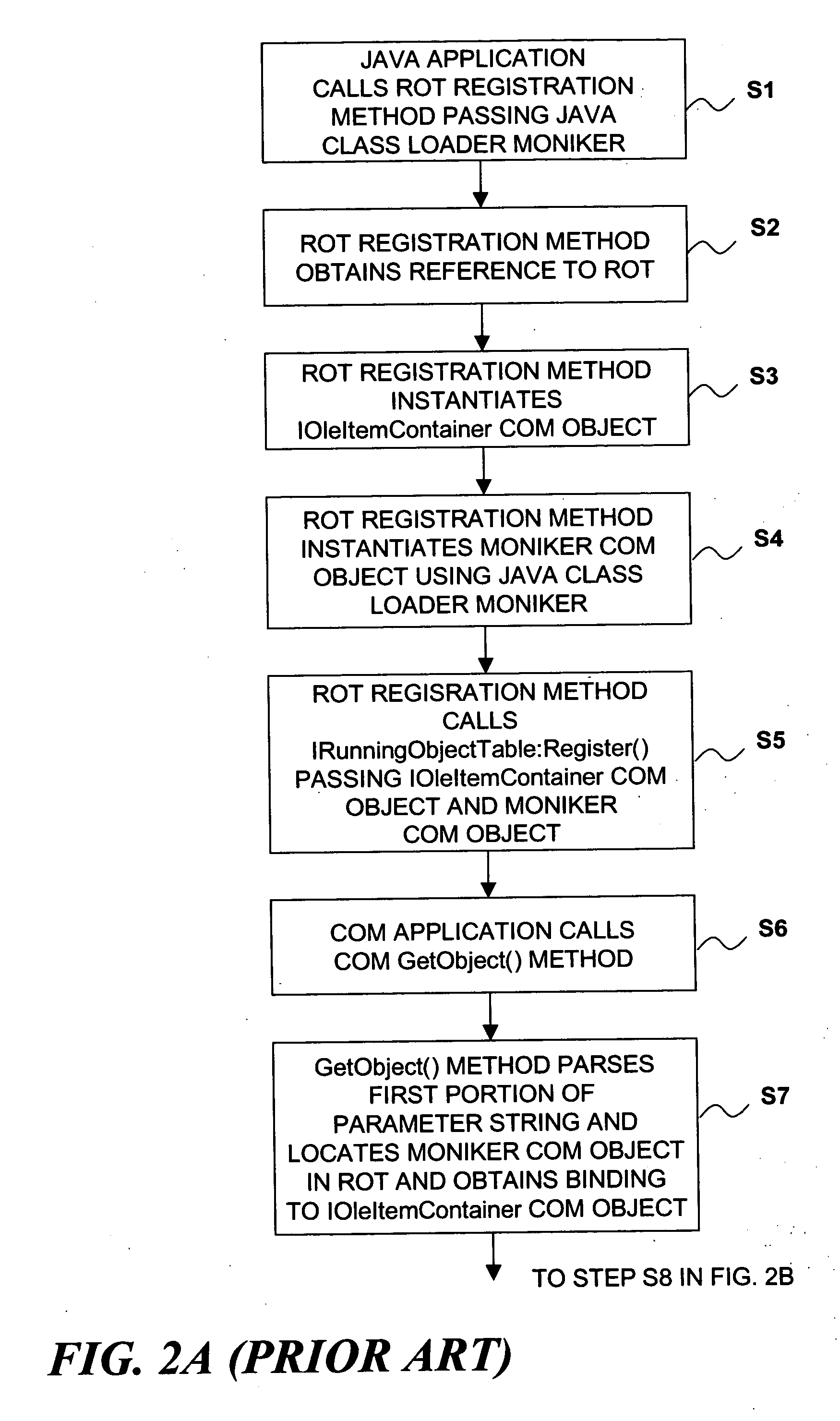Automation of Java application using enhanced late-bound support
a technology of automatic java application and late-bound support, applied in the field of javato com bridge, can solve the problems of java applications at a distinct disadvantage, software integration, and unresolved interoperability between the two technologies, and achieve the effect of enhanced late-bound com-to-java suppor
- Summary
- Abstract
- Description
- Claims
- Application Information
AI Technical Summary
Benefits of technology
Problems solved by technology
Method used
Image
Examples
Embodiment Construction
I. Introduction
[0023] Turning now to the drawing figures wherein like reference numbers indicate like elements in all of the several views, FIG. 1 illustrates a Java / COM bridge 2 that allows a COM application 4 to invoke an automated API associated with a Java application 6 even though the latter includes objects that are not intended to be instantiated. The Java / COM bridge 2 comprises a Java runtime library 8 and a COM runtime library 10. The Java side of the Java / COM bridge 2 is shown as being separated from the COM side of the Java / COM bridge by an interface 12 labeled “JNI.” The term JNI refers to the Java Native Interface provided by the Java Development Kit (JDK). Persons skilled in the art will appreciate that the JNI framework allows Java code that runs within a Java Virtual Machine (JVM) to operate with applications and libraries written in other languages, such as C, C++ and assembly, and visa versa. It thus provides interfaces whereby Java applications can utilize COM obj...
PUM
 Login to View More
Login to View More Abstract
Description
Claims
Application Information
 Login to View More
Login to View More - R&D
- Intellectual Property
- Life Sciences
- Materials
- Tech Scout
- Unparalleled Data Quality
- Higher Quality Content
- 60% Fewer Hallucinations
Browse by: Latest US Patents, China's latest patents, Technical Efficacy Thesaurus, Application Domain, Technology Topic, Popular Technical Reports.
© 2025 PatSnap. All rights reserved.Legal|Privacy policy|Modern Slavery Act Transparency Statement|Sitemap|About US| Contact US: help@patsnap.com



